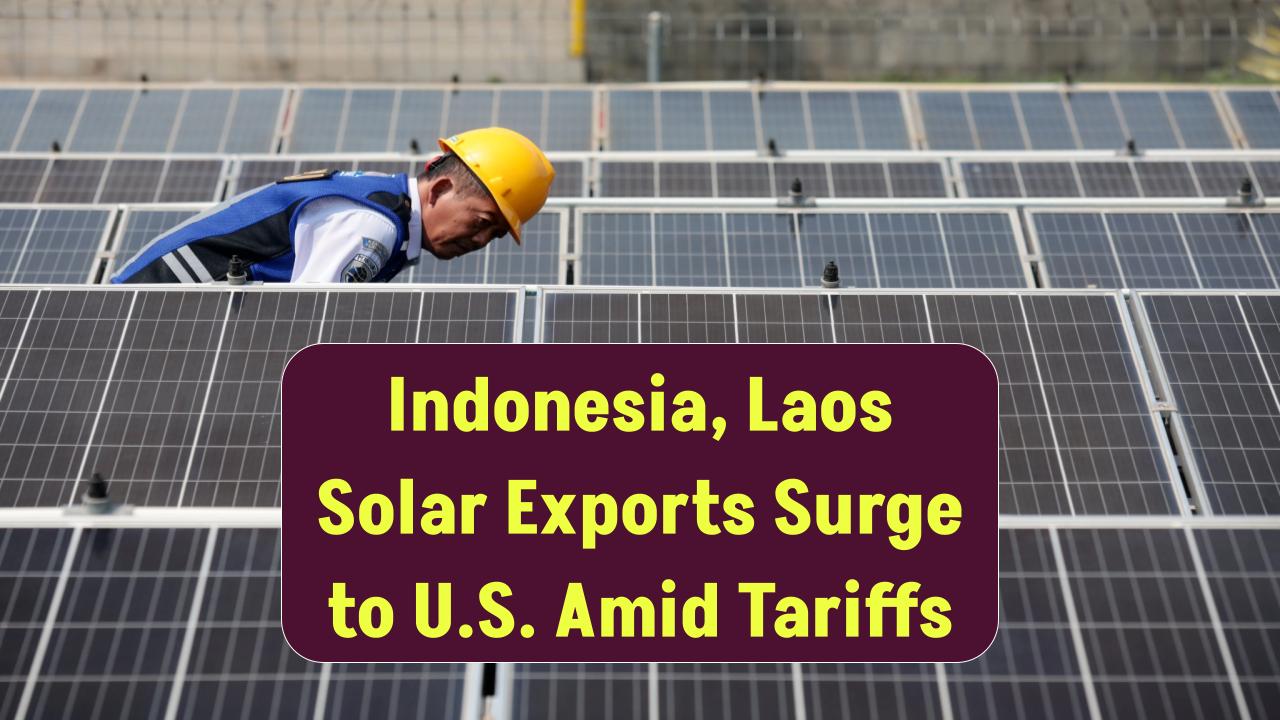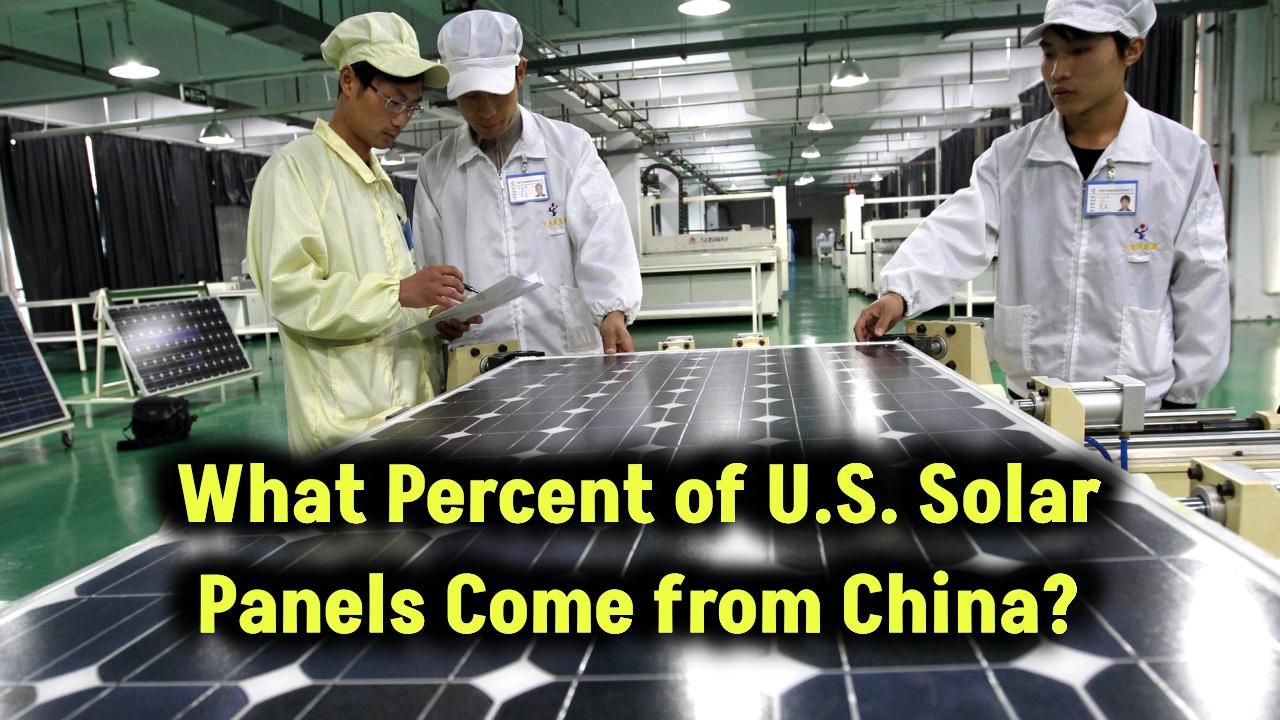In a move that has sent shockwaves through the solar industry, the United States has imposed significant tariffs on solar cell imports from four Southeast Asian countries: Cambodia, Thailand, Vietnam, and Malaysia. These tariffs, which could reach up to 3,521%, are aimed at addressing concerns about unfair trade practices, specifically allegations that Chinese manufacturers have been circumventing U.S. tariffs by using factories in these countries. While the intention is to protect U.S. solar manufacturers, the move raises questions about the future of solar energy in the U.S., its cost for consumers, and the broader implications for renewable energy goals.

This latest decision comes after a year-long investigation by the U.S. Department of Commerce into claims made by American solar producers that Chinese companies had been using Southeast Asia as a loophole to avoid tariffs previously imposed on Chinese solar products. As the U.S. continues to grapple with its relationship with China and its push toward energy independence, these tariffs signal a deeper shift in how the government is approaching the clean energy transition.
Key Highlights
| Topic | Impact | Example | Current Situation |
|---|---|---|---|
| New Tariffs on Solar Imports | Up to 3,521% tariffs on solar cells from Cambodia, Thailand, Vietnam, and Malaysia | Aimed at curbing unfair trade practices by Chinese companies | Solar industry faces significant challenges |
| Solar Industry in the U.S. | Major disruption in supply chain, increased costs for solar panels | U.S. solar companies benefit from tariffs, but consumers face higher prices | Solar energy accounts for 15% of U.S. electricity |
| Biden Administration’s Role | Push for renewable energy via policies like Inflation Reduction Act | Solar energy expansion in states like California | Policy shift toward clean energy, but tariffs complicate growth |
| China’s Role in Solar Manufacturing | The U.S. accuses China of subsidizing solar manufacturers, causing global imbalances | Chinese companies dominate solar panel manufacturing | Trade war escalates, with U.S. tariffs aimed at China |
| Impact on Solar Prices | Potential increase in solar costs, slowing down adoption in U.S. | Tariffs make solar panels more expensive | U.S. consumers could face higher installation costs |
The U.S.’s decision to impose steep tariffs on solar imports from Southeast Asia is a significant move in the ongoing trade war with China. While the goal is to protect U.S. manufacturers from unfair competition, these tariffs could have unintended consequences, including higher prices for solar panels, disruptions in supply chains, and potential setbacks in the U.S.’s clean energy goals. As the global solar market continues to evolve, it remains to be seen how these tariffs will impact the broader transition to renewable energy.
This One Solar Tax Credit Could Save You Over $7,500 — But Most Americans Don’t Even Know It Exists!
Understanding the Tariffs: What Led to the U.S. Decision?
The U.S. Department of Commerce‘s investigation, which lasted more than a year, found that Chinese solar manufacturers were sending solar cells and panels to Southeast Asian countries like Cambodia, Vietnam, Malaysia, and Thailand, where they were then repackaged and exported to the U.S. to avoid tariffs on Chinese-made products. In response, the U.S. imposed hefty tariffs on these imports, with some products facing duties as high as 3,521%.
The tariffs are part of a larger strategy to protect U.S. solar manufacturers from unfair competition. American solar producers had raised alarms that Chinese manufacturers were able to bypass existing tariffs by shifting production to factories in Southeast Asia, undercutting U.S. solar manufacturers who were already subject to high tariffs.
These new tariffs will likely have far-reaching implications not just for the U.S. solar manufacturing sector but also for consumers and the broader renewable energy industry. While they are designed to level the playing field for domestic manufacturers, they also risk driving up the cost of solar panels, potentially slowing down the transition to renewable energy in the U.S.
The Role of the Inflation Reduction Act
The Biden administration has pushed for aggressive clean energy goals, including significant investments in solar energy, as part of the broader Inflation Reduction Act. The Act aims to reduce the cost of renewable energy and encourage clean energy adoption across the country.
However, these new tariffs complicate the transition to clean energy. The tariffs on solar imports could drive up the cost of solar panels, making them less affordable for homeowners and businesses looking to switch to renewable energy. While the tariffs may benefit U.S. manufacturers in the short term, they could hinder the Biden administration’s renewable energy goals, as the higher costs could slow down the adoption of solar energy nationwide.
How Do Tariffs Impact the U.S. Solar Market?
The decision to slap steep tariffs on solar imports from Southeast Asia will likely have several immediate effects on the U.S. solar market:
- Increased Solar Panel Costs: Since a large portion of solar panels sold in the U.S. are manufactured in Southeast Asia, these new tariffs will increase the cost of solar panels. As a result, homeowners and businesses may face higher installation costs, which could slow down the adoption of solar energy.
- Supply Chain Disruptions: The tariffs could lead to supply chain disruptions in the solar industry. Solar panel manufacturers in the U.S. often rely on components from Southeast Asia, and higher tariffs could make it more difficult and expensive to source materials.
- Manufacturing Growth in the U.S.: On the positive side, the tariffs may encourage the growth of solar manufacturing within the U.S. Companies may choose to expand domestic production to avoid the high tariffs. This could lead to more job creation in the renewable energy sector, which is a key goal of the Biden administration’s clean energy agenda.
- Global Trade Tensions: The tariffs also illustrate the ongoing trade tensions between the U.S. and China. This is part of a broader trade war in which the U.S. has targeted China for what it views as unfair trade practices. The tariffs on solar products are one of the latest developments in this escalating trade dispute.
10 Breakthrough Technologies That Could End America’s Fossil Fuel Dependence
The Global Impact of U.S. Solar Tariffs
While the U.S. is one of the largest markets for solar energy, it is far from the only player in the global solar market. Countries in Europe, Asia, and Africa are also investing heavily in solar energy as part of their efforts to reduce carbon emissions and increase renewable energy capacity.
The new tariffs on solar panels from Southeast Asia may lead to increased competition in other markets as manufacturers look for new buyers. In particular, countries like India and Brazil could become key markets for solar manufacturers that are impacted by U.S. tariffs.
Moreover, other countries may follow suit and impose tariffs of their own on Chinese-made solar products, leading to global supply chain shifts. This could cause ripple effects in the global energy transition, slowing the adoption of solar energy worldwide.
Frequently Asked Questions (FAQs)
Why are the U.S. imposing tariffs on solar imports from Southeast Asia?
The U.S. is trying to protect its domestic solar manufacturers from unfair competition. Chinese companies were accused of circumventing previous tariffs by sending solar cells through Southeast Asian factories and then exporting them to the U.S.
How high are the tariffs on solar products from Southeast Asia?
The new tariffs can be as high as 3,521% on solar cells and panels from countries like Cambodia, Vietnam, Thailand, and Malaysia.
How will these tariffs affect solar prices in the U.S.?
The tariffs are expected to raise the cost of solar panels, making them more expensive for consumers and slowing down the adoption of solar energy in the U.S.
Is there any benefit to U.S. manufacturers from these tariffs?
Yes, U.S. solar manufacturers may benefit in the short term, as the tariffs protect them from cheaper solar products flooding the market. However, higher prices for consumers could limit the overall growth of the industry.
How does this impact the Biden administration’s clean energy goals?
The tariffs complicate the Biden administration’s renewable energy goals, as they could make solar panels more expensive and slow the transition to cleaner energy sources.









